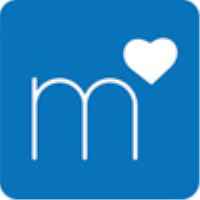Affordable Fashion: Analyzing Trendy Clothing Lines from 2015 to 2020
The fashion industry is constantly evolving, with new trends emerging every season. From high-end designer brands to fast-fashion retailers, there is no shortage of options when it comes to keeping up with the latest styles. However, for many consumers, affordability is a key factor when it comes to updating their wardrobe.
Online shopping has revolutionized the way we shop for clothing, making it easier than ever to find trendy and affordable pieces from the comfort of our own homes. In this article, we will take a closer look at some of the most popular clothing lines from 2015 to 2020 that offer stylish options at affordable prices.
2015-2016: The Rise of Fast Fashion
In the early 2010s, fast-fashion retailers like H&M, Zara, and Forever 21 dominated the market with their affordable and trendy clothing options. These brands were known for their quick turnaround times, with new styles hitting the shelves every week.
During this time, athleisure became a prominent trend, with leggings, crop tops, and sneakers becoming wardrobe staples for many fashion-forward individuals. Brands like Nike, Adidas, and Lululemon capitalized on this trend by offering stylish activewear at competitive prices.
2017-2018: Sustainable Fashion Takes Center Stage
As consumers became more environmentally conscious, sustainable fashion started to gain traction in the industry. Brands like Reformation, Everlane, and Patagonia were praised for their ethical manufacturing practices and commitment to using eco-friendly materials.
A shift towards minimalist and timeless pieces also emerged during this time, with neutral colors and classic silhouettes becoming popular choices for many shoppers. Brands like Madewell and Uniqlo excelled in providing affordable basics that could be mixed and matched to create a variety of looks.
2019-2020: Inclusivity and Diversity in Fashion
In recent years, the fashion industry has made strides towards inclusivity and diversity, with more brands offering extended size ranges and showcasing diverse models in their campaigns. Plus-size brands like Eloquii and Lane Bryant have gained popularity for their trendy and stylish options for curvy women.
Additionally, gender-neutral and unisex clothing lines have become more mainstream, with brands like ASOS and Urban Outfitters leading the way in offering inclusive options for all consumers. The rise of streetwear and gender-fluid fashion has also contributed to this shift towards more inclusive clothing options.
The Future of Affordable Fashion
Looking ahead, it is clear that affordable fashion will continue to evolve and adapt to the changing needs and preferences of consumers. With the rise of e-commerce and social media platforms, it is easier than ever for consumers to discover new and trendy clothing lines that cater to their individual style.
As technology continues to advance, we can expect to see more personalized shopping experiences and innovative solutions for sustainable and ethical fashion practices. Brands that prioritize transparency and accountability in their supply chains will likely gain favor among socially conscious consumers.
Conclusion
From fast-fashion retailers to sustainable and inclusive brands, the fashion industry has seen significant changes in the past five years. Affordable fashion is no longer synonymous with low-quality and generic styles, as more brands are offering trendy and fashionable options at accessible price points.
Whether you prefer classic basics or bold statement pieces, there is a wide range of options available for every style preference and budget. By staying informed and supporting brands that align with your values, you can build a stylish and sustainable wardrobe that reflects your unique personality.
